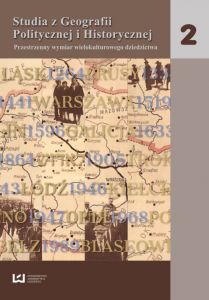Colonial heritage in multi-ethnic societies: undercover racism in twenty-first-century Peru
Colonial heritage in multi-ethnic societies: undercover racism in twenty-first-century Peru
Author(s): Luis EscobedoSubject(s): Essay|Book Review |Scientific Life
Published by: Wydawnictwo Uniwersytetu Łódzkiego
Keywords: racism; ethnicity; nationalism; interethnic relations; post-colonialism; rasizm; etnocentryzm; nacjonalizm; stosunki międzyetniczne; postkolonializm
Summary/Abstract: Since the beginning of the 16th century, Peruvian society has undergone an intense ethnic and cultural mixing. This process has involved fusion and diversity, whereby it has revealed a variety of antagonisms and conflict, especially found between the regions of the Coast – particularly, Lima – and the Andean Mountains. The importance of Lima as a political and economic center during the Colony, favored the people of the Coast over Andean people – predominantly indigenous. This disparity persisted after Independence, given that, in the absence of Spaniards, Creoles had become the ruling class. Since the beginning of the 20th century, however, Andean people have found in migration towards urban and Coastal areas an opportunity to improve their living conditions. Yet, even if Andean migrants and their descendants continue to grow in power and status, they are still subject to racial discrimination. Together with Peruvians of other origins who have similarly accumulated disadvantages throughout history, such as afro-Peruvians, they are perceived and stigmatized as part of an unofficial category of non-whites. Though in a complex and undercover manner, Peruvian society has given this grouping poor valuation. On the contrary, white Peruvians have been highly valuated. Drawing upon social scientific research on racism since the late 1980s, the present paper aims at explaining why and how people of more predominant European features are rather idealized whereas the ones with less European features are rather denigrated, and how racism works covertly within the daily social relations among Peruvians today Od początku XVI w. społeczeństwo Peru zostało poddane intensywnemu wymieszaniu pod względem etnicznym i kulturowym. Proces ten obejmował łączenie i godzenie różnorodności, jednakże odsłonił także liczne antagonizmy i konflikty, szczególnie widoczne pomiędzy regionami na Wybrzeżu (zwłaszcza w Limie) a Andami. Znacząca pozycja Limy jako ośrodka politycznego i ekonomicznego w okresie kolonialnym spowodowała faworyzowanie ludzi z Wybrzeża, kosztem mieszkańców Andów, głównie autochtonów. Ta dysproporcja utrzymywała się w czasach po odzyskaniu niepodległości, pomimo że w obliczu nieobecności Hiszpanów, Kreole stali się klasą rządząca. Od początku XX w. ludność z Andów upatrywała szansę poprawy warunków życia dzięki migracji do miast lub na wybrzeże. Mimo że ludność napływowa z Andów oraz ich potomkowie zaczęli z czasem partycypować w sprawowaniu władzy, zyskując przy tym równy innym obywatelom status społeczny, nadal byli przedmiotem dyskryminacji rasowej. Razem z Peruwiańczykami o innym pochodzeniu, którzy byli w historii podobnie uznawani za obywateli niższej kategorii, jak np. afro-Peruwiańczycy, postrzegano i naznaczano ich jako przynależnych do nieoficjalnej kategorii nie-białych.
Journal: Studia z Geografii Politycznej i Historycznej
- Issue Year: 2013
- Issue No: 02
- Page Range: 109-137
- Page Count: 29
- Language: English

